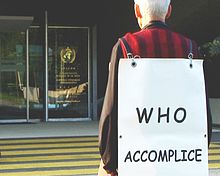 Transocean Ltd. gave its top executives bonuses for achieving the “best year in safety performance in our company’s history” — despite the explosion of its oil rig that killed 11 people and spilled 200 million gallons of oil into the Gulf of Mexico.
Transocean Ltd. gave its top executives bonuses for achieving the “best year in safety performance in our company’s history” — despite the explosion of its oil rig that killed 11 people and spilled 200 million gallons of oil into the Gulf of Mexico.
The company said in a regulatory filing that its most senior managers were given two thirds of their total possible safety bonus.

 Energy Glance
Energy Glance


 Behind Japan's escalating nuclear crisis sits a scandal-ridden energy industry in a comfy relationship with government regulators often willing to overlook safety lapses.
Behind Japan's escalating nuclear crisis sits a scandal-ridden energy industry in a comfy relationship with government regulators often willing to overlook safety lapses.
 A top official with the Nuclear Regulatory Commission said Monday that the nuclear crisis in Japan did not warrant any immediate changes in American nuclear plants. The commission’s inspectors at each nuclear site have been told to double-check that emergency precautions mandated years ago were still in place, including temporary hoses and fittings and other last-ditch backup equipment, said the official, William Borchardt, the executive director for operations.
A top official with the Nuclear Regulatory Commission said Monday that the nuclear crisis in Japan did not warrant any immediate changes in American nuclear plants. The commission’s inspectors at each nuclear site have been told to double-check that emergency precautions mandated years ago were still in place, including temporary hoses and fittings and other last-ditch backup equipment, said the official, William Borchardt, the executive director for operations.






























